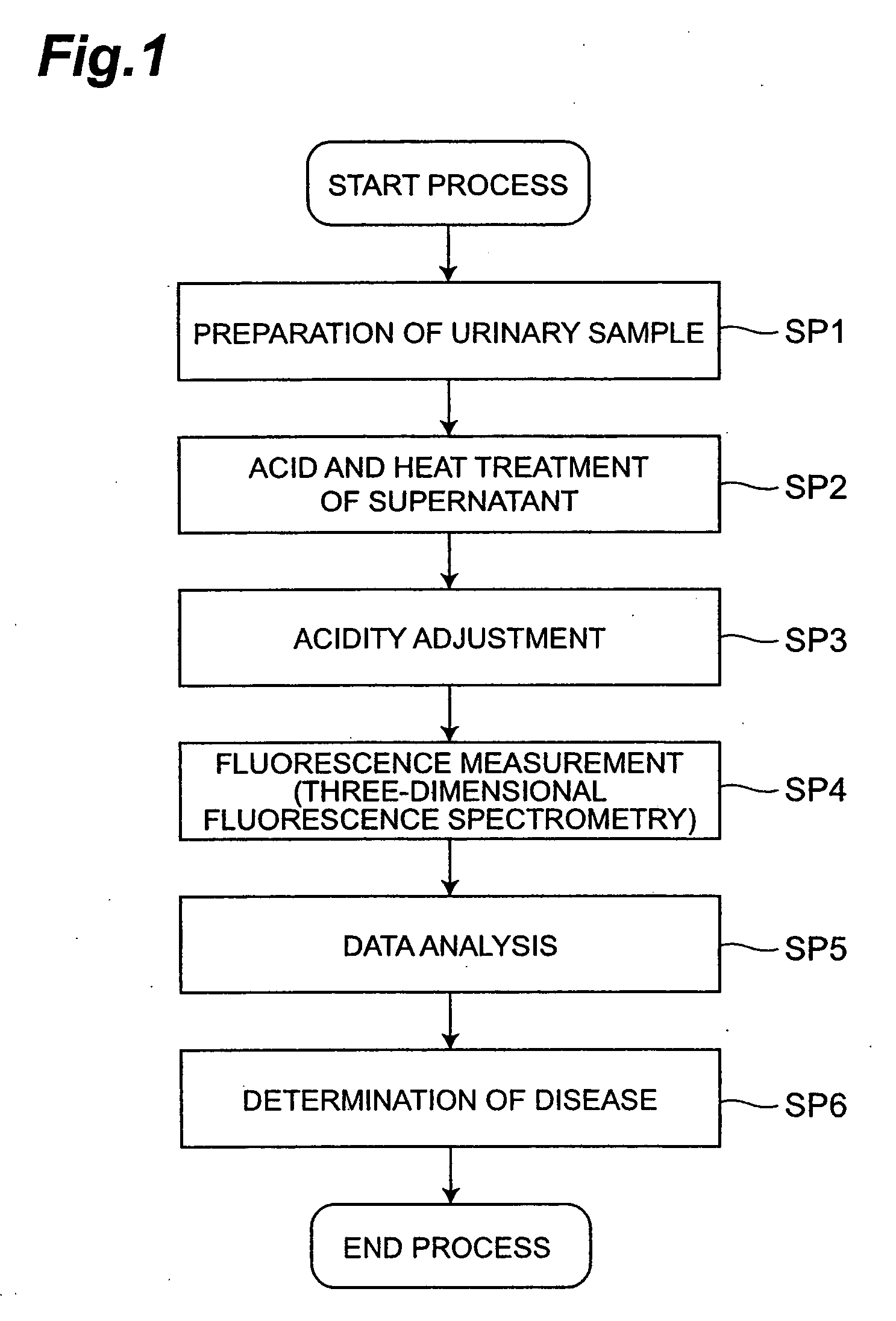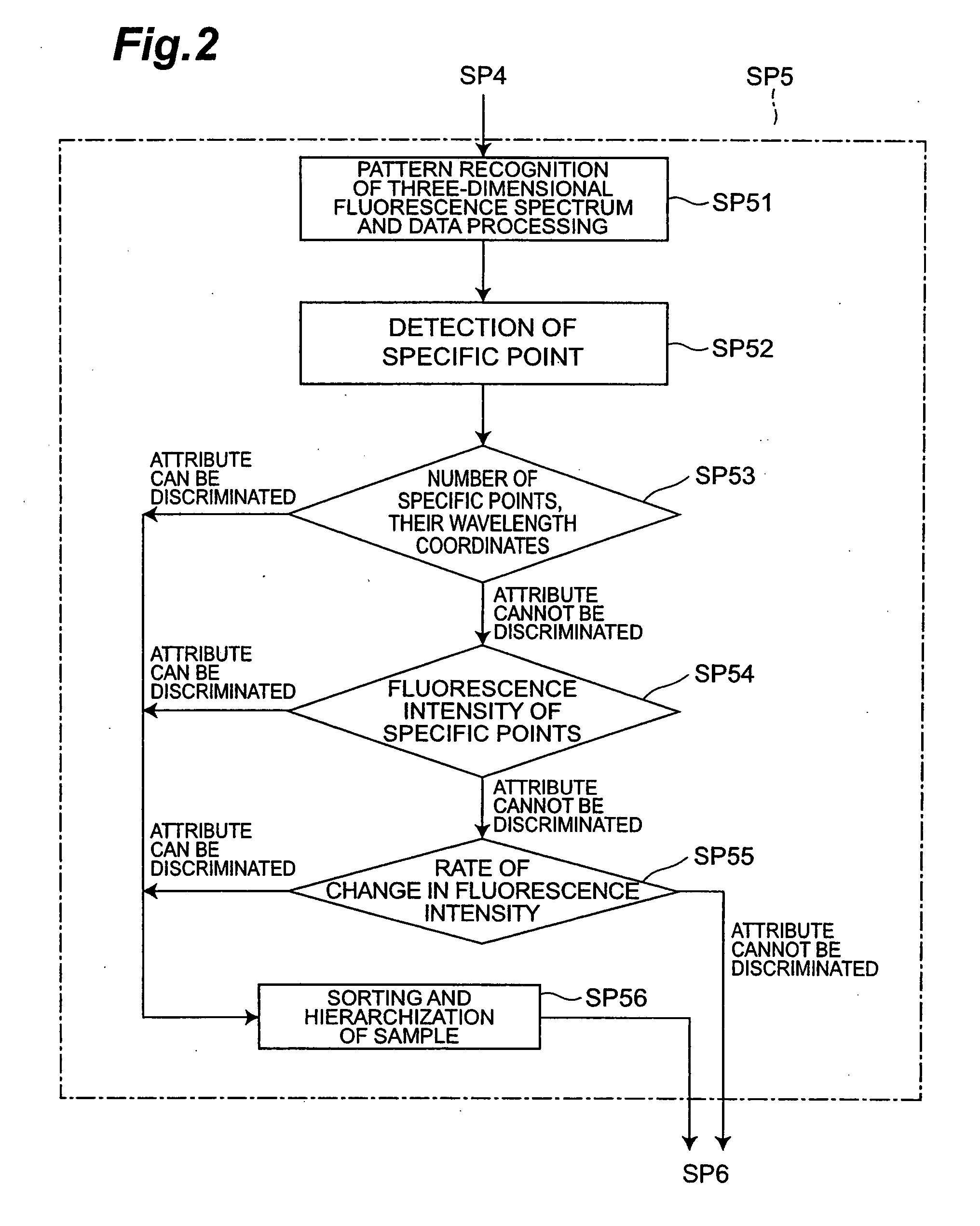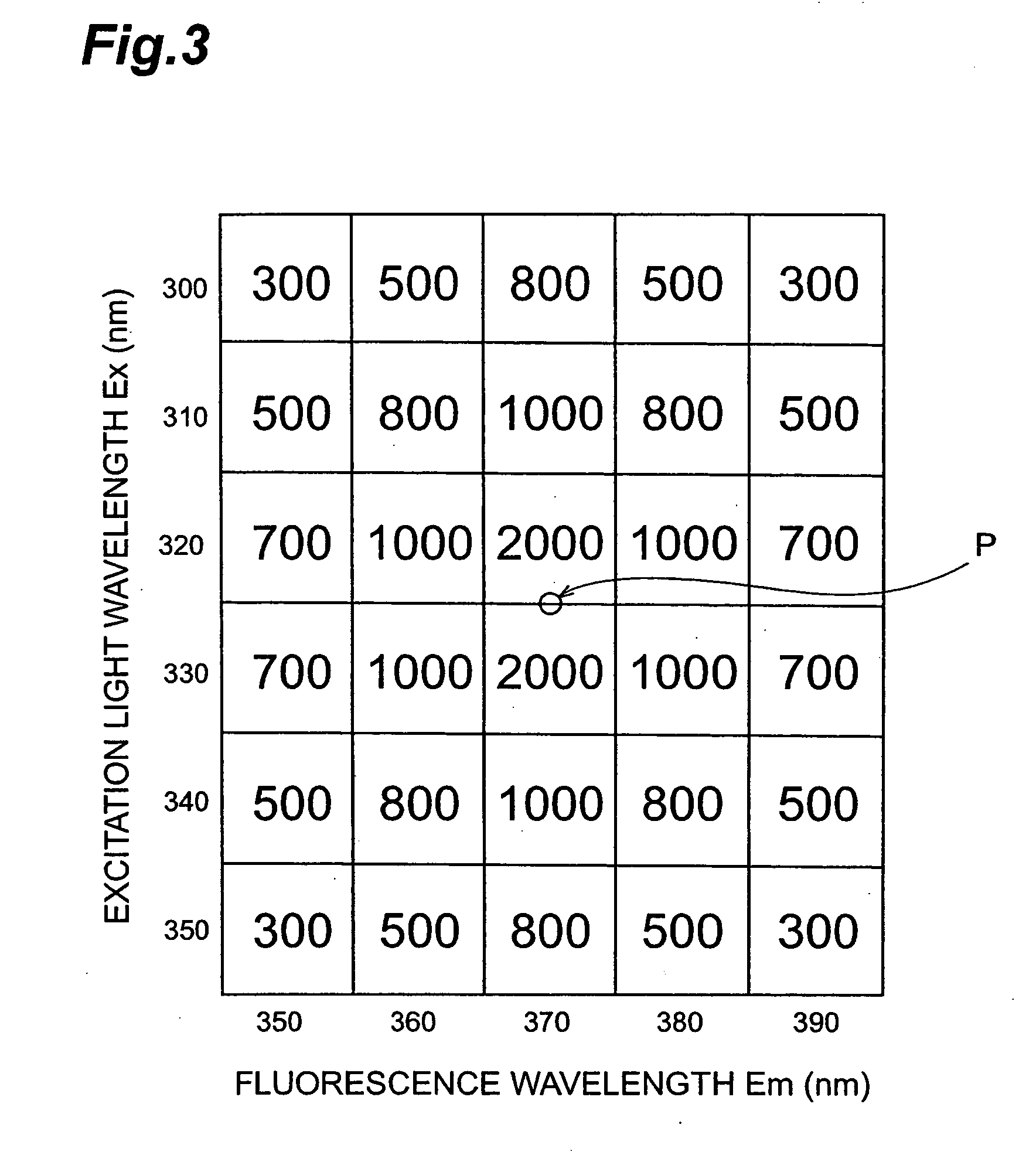Disease determination method, data generation method for disease determination and data generation system for disease determination
a technology of data generation and disease determination, applied in the direction of fluorescence/phosphorescence, biological testing, peptides, etc., can solve the problems of insufficient veracity and accuracy of disease determination, insufficient use of oncopterin as a single marker, and insufficient multi-use compatibility and compatibility of oncopterin, etc., to facilitate the determination process, improve the accuracy of determination, simple and accurate determination
- Summary
- Abstract
- Description
- Claims
- Application Information
AI Technical Summary
Benefits of technology
Problems solved by technology
Method used
Image
Examples
first embodiment
[0054]FIG. 1 is a flowchart showing a procedure to perform the preferable first embodiment of the disease determination method and data generation method for disease determination of the present invention.
[0055] (Pretreatment of the Urinary Sample)
[0056] First, urine is collected from a subject to prepare a urine sample (step SP1). Next, the urinary sample is centrifuged to separate the liquid component from fine solid components and the supernatant is collected. Then, the supernatant is transferred to a sealed pressure vessel such as a test tube with a screw cap, then the supernatant is mixed after the addition of acid such as hydrochloric acid, and incubated for a certain period of time while heating at a certain temperature to perform adding acid and heating process of a urinary sample supernatant (step SP2; pretreatment process). With this step, a part or an entire part of the biochemical component in the supernatant is subject to make chemical reactions such as hydrolysis.
[0...
second embodiment
[0082] Next, disease determination method, data generation method for disease determination and data generation system for disease determination of the second embodiment will be explained.
[0083] First, the major differences from the first embodiment will be explained hereinafter In the first embodiment, the specific point attribute for the sample collected from healthy volunteers are obtained in advance and compared with the specific point attribute for the sample collected from the subject to generate disease determination data based on their sorting and hierarchized results.
[0084] In contrast, in the present embodiment, the specific point attribute or its combination of specific point attributes uniquely found in the samples from patients with various diseases such as patients with stomach cancer or colon cancer, for example, are stored as standard data for each disease type, and then disease determination data, namely sorting results or hierarchized results of the sample from t...
example 1
[0124] In the present example, it has been examined whether the discrimination of patients with malignant tumors from the healthy volunteers based on the wavelength coordinates of the specific points and the number of specific points, and one example of the known specific point attributes were obtained.
[0125] (Pretreatment of the Samples)
[0126] A total of 153 samples, including 74 samples from healthy volunteers and 79 samples from the patients with a malignant tumor, were prepared.
[0127] (Pretreatment of Urinary Samples)
[0128] All 153 samples were centrifuged at 3000 gal for 10 minutes. The supernatant of urinary samples obtained after the centrifugation was collected and then 1 ml of each supernatant was individually enclosed in a test tube with a screw cap containing 2 ml of 6 mol / L hydrochloric acid and heated at 150° C. for one hour to facilitate hydrolysis of the supernatant component.
[0129] (Acidity Adjustment of Urinary Sample)
[0130] 10 μl of supernatant of the pre-tre...
PUM
| Property | Measurement | Unit |
|---|---|---|
| wavelength | aaaaa | aaaaa |
| wavelength | aaaaa | aaaaa |
| wavelength | aaaaa | aaaaa |
Abstract
Description
Claims
Application Information
 Login to View More
Login to View More - R&D
- Intellectual Property
- Life Sciences
- Materials
- Tech Scout
- Unparalleled Data Quality
- Higher Quality Content
- 60% Fewer Hallucinations
Browse by: Latest US Patents, China's latest patents, Technical Efficacy Thesaurus, Application Domain, Technology Topic, Popular Technical Reports.
© 2025 PatSnap. All rights reserved.Legal|Privacy policy|Modern Slavery Act Transparency Statement|Sitemap|About US| Contact US: help@patsnap.com



